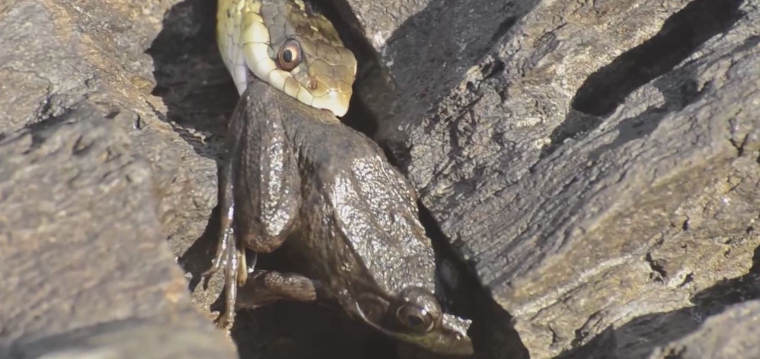-
info@aaanimalcontrol.com
Call us for help in your town
Humane Wildlife Education
How do snakes kill their prey?
Need snake removal in your hometown? We service over 500 USA locations! Click here to hire us in your town and check prices- updated for year 2020.
Different snakes will use different methods to kill of overpower their victims — prey. Venomous snakes, for example, use their powerful venom and one or two snappy bites to get the job done. They don't actually need to overpower their prey. They just need to get in one or two well-timed bites to inject that powerful and potent venom. Then they can just sit back and wait.

One of the most dangerous snakes found across the United States of America is the Timber Rattlesnake, found in places such as southern regions of New Hampshire, Minnesota, and south plus east Texas, and even in the northern areas of Florida. The species has also been noted in Indiana, and other areas across the eastern United States. This particular species has everything working on its side to be a dangerous killer, both to humans and other animals alike. The fangs are very long, enabling them to puncture a number of flesh/skin types. The size of the snake can be large in some cases, sixty inches in length or more. When you add to that a powerful and large yield of venom, you have a dangerous recipe. The snake itself is known to be quite a docile one when it is left alone, usually preferring to hunt and feast on small mammals and animals — smaller snake species or snake young, mice, small rats, frogs, small birds, and eggs in bird nests.
The Timber Rattlesnake isn't actually the most dangerous species of rattlesnake in terms of venom, with the Mojave Green Rattlesnake, or just Mojave Rattlesnake, known to be the “most venomous viper species”. You can find this chap in Mexico mostly, and certain south-westerly areas of the United States, opting for mountain slopes and areas of desert. This is one of the most venomous snakes found across the world, but the anti-venom is easily found these days, making the snake bite a less deadly one that it was a few decades ago. Symptoms for humans may start off with speaking difficulties, problems with swallowing, abnormalities in vision, respiratory difficulty, and even skeleton muscle degeneration and weakness. Snake bite cases are relatively rare, with many people and animals very well aware of the dangers when that familiar rattle sound is heard.
The Eastern Mud Snake, on the other hand, looks pretty venomous, with it's black and bright red patterns and markings, but is a non-venomous species that doesn't rely on venom to kill their prey. This species lives close to water, preferring a menu that includes fish, tadpoles, frogs and small salamanders for the younger ones, and other, larger Amphiumas for the older ones, larger ones. The eastern mud snake has curved teeth that are perfectly designed to grip onto the prey that would easily slip out of the mouths, hands, or paws of others.
Pythons and boa snake species are generally known to be the longest, widest, and heaviest species of all snakes. They use their size and power in their method of killing, wrapping around and then tightly squeezing their prey until whatever kills it, kills it. In some cases, this might be suffocation. In others, it might be a broken neck or internal bleeding. Lots of things happen when you are tightly squeezed to death, and even humans can be easily overpowered by larger species of boa constrictor. Anacondas are the largest of the species, but these are not found in North America, apart from when pets are accidentally released into the wild, which can happen and has actually happened a lot in Florida — the Everglades.
For the most part, snakes have a habit of adapting nicely to meet whatever territory they live in. The snakes that live close to water and those slippery prey animals will have curved teeth that make it easier to keep hold of them.
For more information, you may want to click on one of these guides that I wrote:
How much does snake removal cost? - get the lowdown on prices.
How to get rid of snakes - my main snake removal info guide.
Example snake trapping photographs - get do-it-yourself ideas.
Snake job blog - learn from great examples of snake jobs I've done.


















